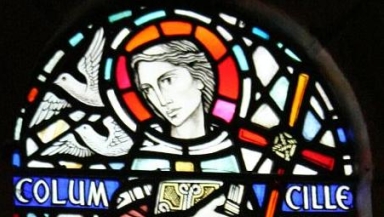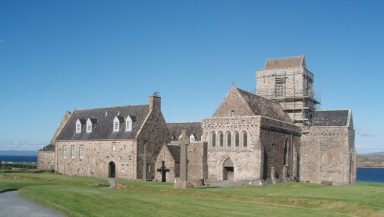
The remains of a wooden hut used by Saint Columba, who is widely credited with bringing Christianity to Scotland, have been discovered on the Scottish island of Iona.
Archaeologists have used radiocarbon dating to place samples of burned wood in the middle of Columba's time there almost 1,500 years ago.
The charred remains of a 'cell' were excavated in 1957, but it has taken until now for science to date them accurately.
The cell, or scriptorium, is where St. Columba worked, prayed and spent his last day.
Columba – whose Gaelic name is Colum Cille, meaning 'the dove of the Church' - arrived on Iona from Ireland in the year 563.
His vision led to Iona Abbey, which became a centre of literacy, learning and worship, and after his death Iona became a place of pilgrimage for kings and commoners. Some 60,000 members of the public and pilgrimstoday visit the rebuilt abbey every year.
Columba's successor Adomnán, writing 100 years after the saint's death, described him working in his cell on a rocky knoll called Tòrr an Aba - 'the mound of the abbot' - and sixty years ago the site was excavated by a team led by the Cornish historian and archaeologist Charles Thomas.
That was near the beginning of Thomas's career, which saw him become the leading archaeologist of early Christianity in Britain and Ireland, with posts at Edinburgh, Leicester and Exeter universities.
In 1957, on Tòrr an Aba, diggers found hazel charcoal, apparently the remains of a wattle hut.

According to the BBC, the site had been deliberately covered with beach pebbles and there was a hole where a post - possibly a cross - had been placed.
Thomas took the remains with him from university to university. After he retired he stored them in his garage in Truro, which is where they stayed until five years ago when a project led by University of Glasgow archaeologists Dr Ewan Campbell and Dr Adrián Maldonado took up the cause.
Thomas happily handed them over for testing using radiocarbon techniques of an accuracy unimaginable six decades ago.
The project was funded by Historic Environment Scotland and supported by the National Trust for Scotland. It saw the samples tested by the Scottish Universities Environmental Research Centre.
The result was that the remains of the hazel stakes date the hut between the years 540 and 650.
Columba died in 597.













